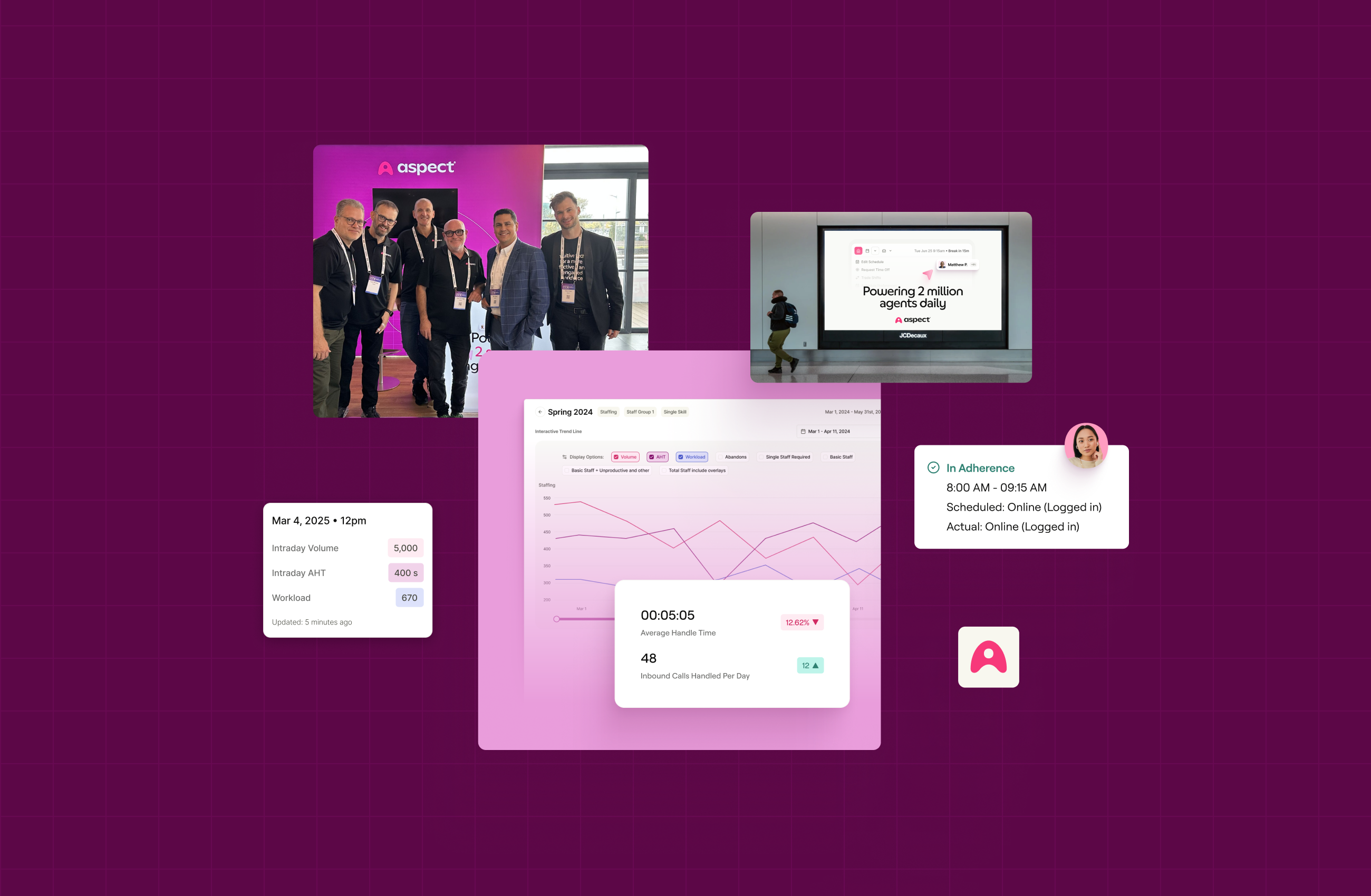Call center routing is a critical factor that can make or break customer service operations. Well-designed call routing strategies enhance both customer satisfaction and operational efficiency.
This blog explores call routing fundamentals, strategies for organizing contact center routing sets in your workforce software, and impacts on your customer service operations.
What is call center routing?
Call center routing is a process that automatically distributes customer calls or interactions to available agents based on specified parameters. These parameters most often include agent skill set and level, language proficiency, and geographical location. However, these parameters can be more granular and specific to each contact center's needs.
Call routing systems are also referred to as automatic call distribution (ACD) system. Automated systems reduce wait times and improve resolution rates by matching customers with the most qualified agents for their specific needs.
Common call center routing strategies
Many large call centers utilize ACDs to route interactions based on the following common methods.
- Skills-based routing. Connecting customers with an agent who has the most appropriate skill set to handle the interaction.
- Priority-based routing. Connecting customers with agents based on caller identity, call purpose, and urgency.
- Geographic routing. Connecting customers with an agent who can provide region-specific support, including language and time zone.
ACDs are effective ways to intelligently route calls, but many large-scale organizations require additional resources to ensure they're properly staffed to meet call demand. This is where workforce management solutions and contact center routing sets come in, providing accurate staffing solutions to meet forecasted volume.
What are contact center routing sets?
Routing sets are an organizational unit to show the relationships between forecast groups and staff groups.
A forecast group is a data point that tracks the volume and duration of incoming interactions for a specific group. A staff group is a group of agents who meet certain criteria, often based on their skillset and availability. A routing set is the relation between these two entities.
Staff groups are typically based on the following attributes:
- Agent skillset
- Geographic location
- Language proficiency
Contact center routing sets can be modeled in workforce management (WFM) solutions to provide proper staffing solutions based on forecasted call volume.
It’s difficult to fully replicate call routing strategies in routing sets. However, thoughtfully organized routing sets can provide invaluable efficiency gains to ensuring forecasted call volume is appropriately assigned to agents.
How are contact center routing sets organized?
Workforce management software enables administrators to customize routing set organization to match their specific business requirements.
The simplest routing set organization assigns one forecast group to a single staff group of single-skilled agents.
However, more complex routing set organization is often needed to improve overall efficiency. This includes scenarios with multiple staff groups taking call volume from one forecast group or multiple forecast groups being routed to a single staff group. In organizations with more complex needs, multiple forecast groups can be handled by multiple staff groups.
This is a simplified explanation of routing sets. In reality, organizations handle varying levels of complexity to find what works best for their needs. Often, this involves finding the optimal balance in modeling relationships between forecast groups and staff groups, and determining whether the call volume justifies the modeling effort.
Finding the contact center routing set sweet spot
It can be difficult to find the happy middle ground of what’s worth modeling in your workforce management software. Call volume plays a significant role in determining what to model. Higher volumes enable more detailed groups to be modeled effectively.
When only a tiny percentage of calls go to a specific staff group, does modeling this routing set provide enough value to justify the effort? While detailed routing sets can boost efficiency when implemented properly, they can also increase complexity and reduce benefits if not balanced carefully.
A rule of thumb is: if a routing set reflects 10% or more of a relationship, it should be modeled. This represents a significant amount of call volume that’s being handled by that staff group.
Below 10%, you're getting into the territory of diminishing returns when deciding whether to include it in your WFM system or find some middle ground. A simple solution is to create a catch-all category to handle call volume not tracked by existing routing sets.
Configuring routing sets in Aspect Workforce
Forecast groups represent specific types of work or customer demand, such as sales calls, support inquiries, or multilingual queues. Each forecast group tracks the volume and timing of this work, anticipating staffing needs for each channel, topic, or customer segment.
Staff groups represent pools of agents with certain skills, locations, or roles. For example, a staff group might consist of bilingual agents, product specialists, or regional teams. These groups reflect agents’ abilities and their availability to handle different types of customer interactions. Staff groups can be single-skilled (assigned to one type of work) or multi-skilled (able to handle several types of work across different forecast groups).
Advanced forecasting in Aspect Workforce enables users to forecast across several distinct categories including volume and staff, allowing for routing set configurations that offer detailed, flexible assignment logic that matches business reality. As a contact center’s needs become more complex, establishing these relationships between forecast groups and staff groups is necessary for operational efficiency.
Routing set configurations in Aspect Workforce establish which agent groups serve which types of work across what channel—and in what priority. This mapping enables scenarios like sending technical support calls first to a primary team and overflow calls to a backup group. This structure is crucial for building a solid foundation for workforce forecasting, intraday management, and service level tracking.
Modeling your routing sets well directly impacts service, cost, and agent utilization—allowing you to adjust staffing to demand without over- or under-allocating resources.
Our technical experts can guide you in organizing routing sets effectively for your contact center. Contact our team today to learn how our workforce management solutions can streamline your routing processes.
Benefits of effective routing sets
Effectively organizing contact center routing sets provides several benefits to your business, including:
- Higher service levels. Service level generally reflects how long a customer has to wait to be serviced and how long that interaction takes until resolution. If you're adequately staffing, customers aren't having to wait on a phone call.
- Better cost savings. Routing sets promote appropriate staffing, ensuring a call center isn't overstaffed while still meeting service level goals.
- Enhanced customer experience. Reduced wait times and faster call resolution create better customer experiences, leading to increased brand loyalty.
Common challenges with optimizing contact center routing sets
The accuracy of routing set models in workforce solutions improves with more historical data. Low volume scenarios can make it difficult to precisely and efficiently forecast. This circles back to the fundamental question: Is creating detailed routing sets for low-volume scenarios worthwhile? The complexity of managing these scenarios may outweigh the minimal benefits they provide.
The Aspect team continuously develops new product features to improve contact center operations, including more flexible routing set simulations. Visit our product roadmap to learn about upcoming improvements.
Future trends in modeling routing in WFM
As contact centers face growing demands, providing more accurate and effective routing solutions has become essential. Automation and AI play a pivotal role in enhancing processes across contact centers though proactive solutions to more effectively model scenarios for the future. This includes predicting attrition to intervene and reduce turnover among staff groups, as well as planning ahead to better train agents to handle multiple types of service interactions.









